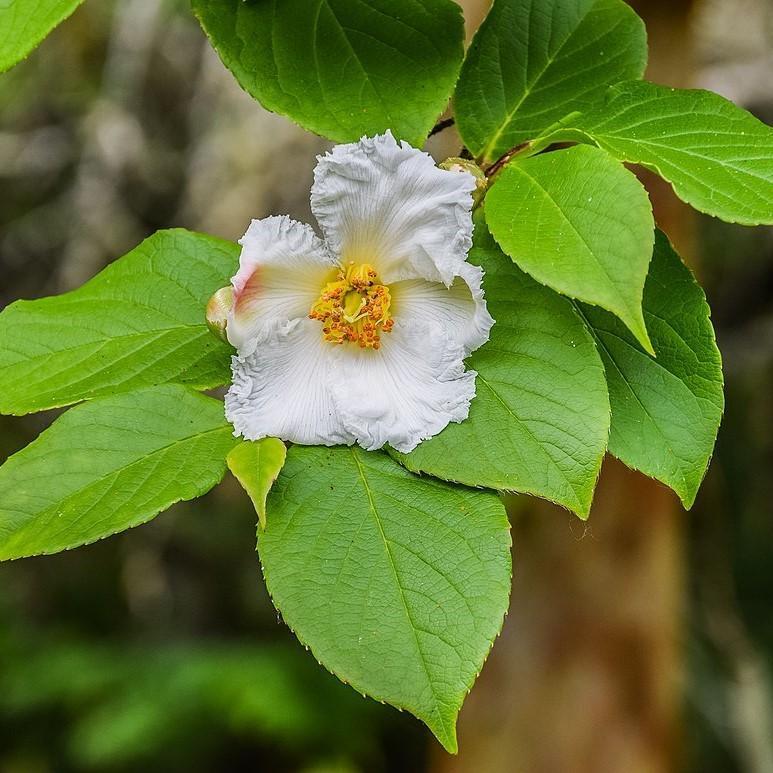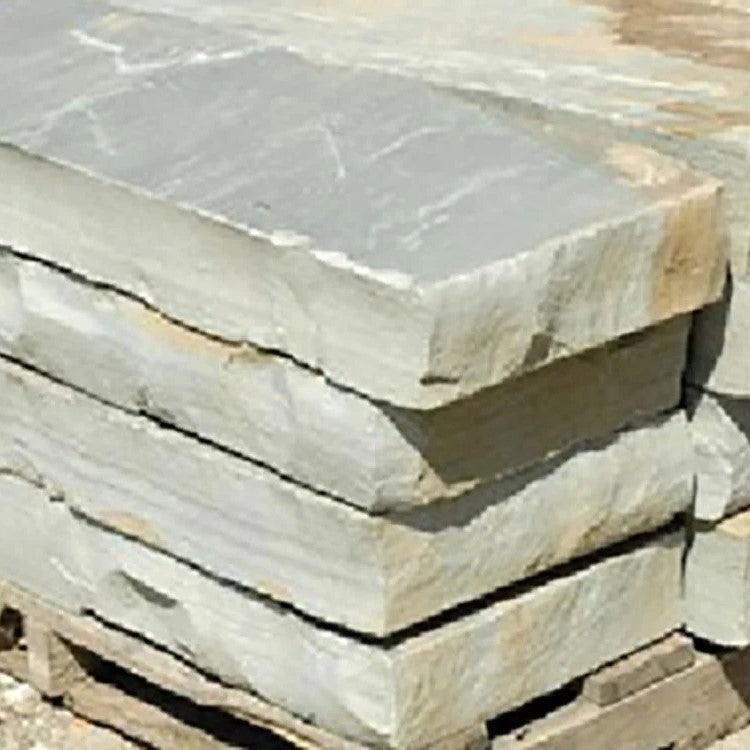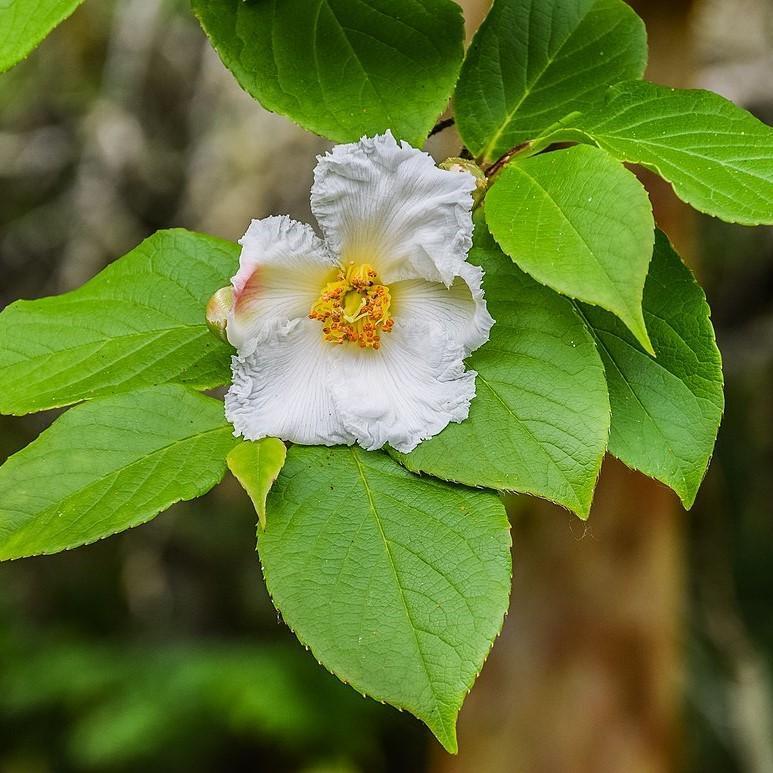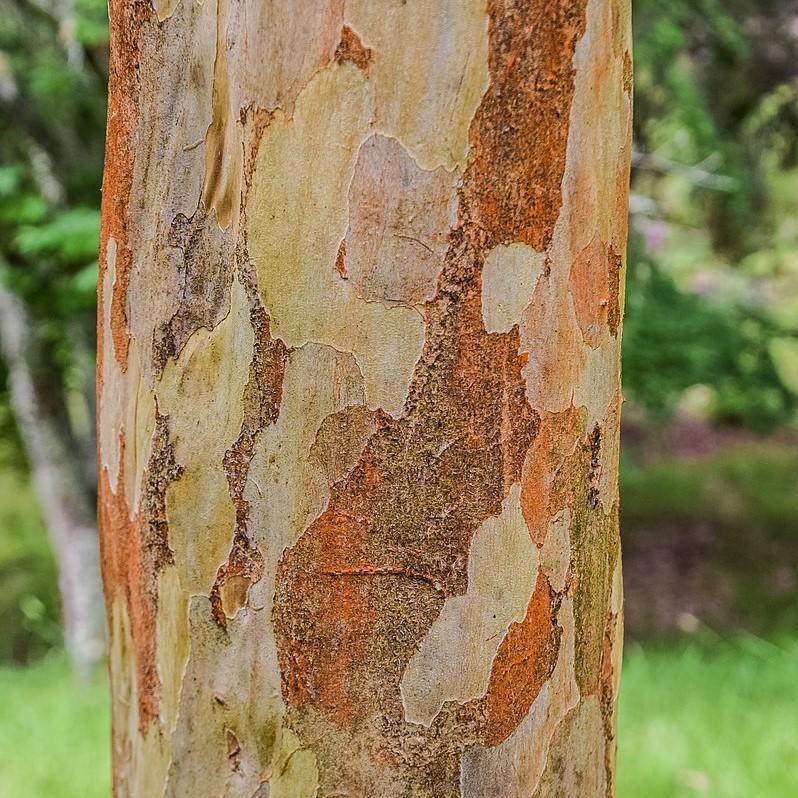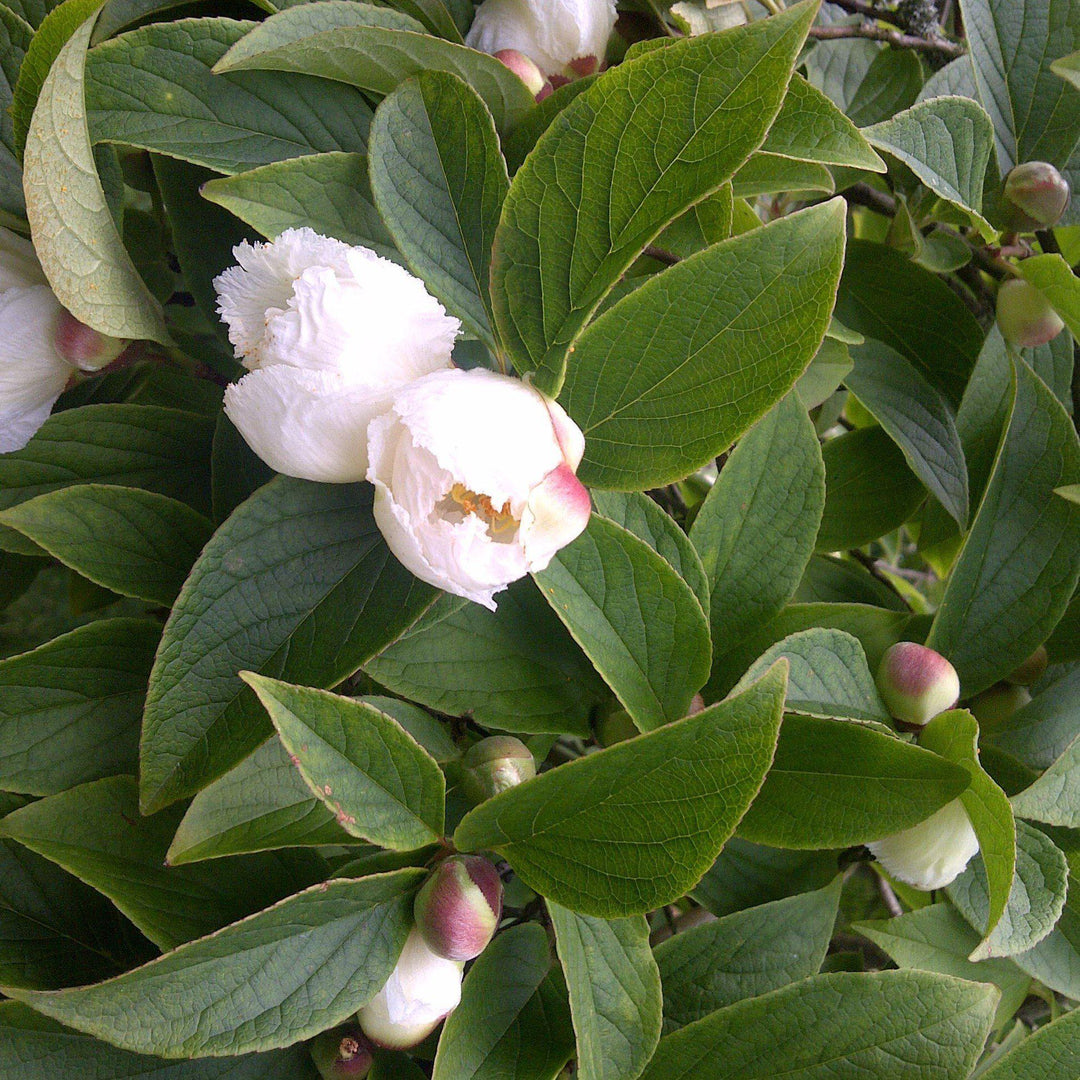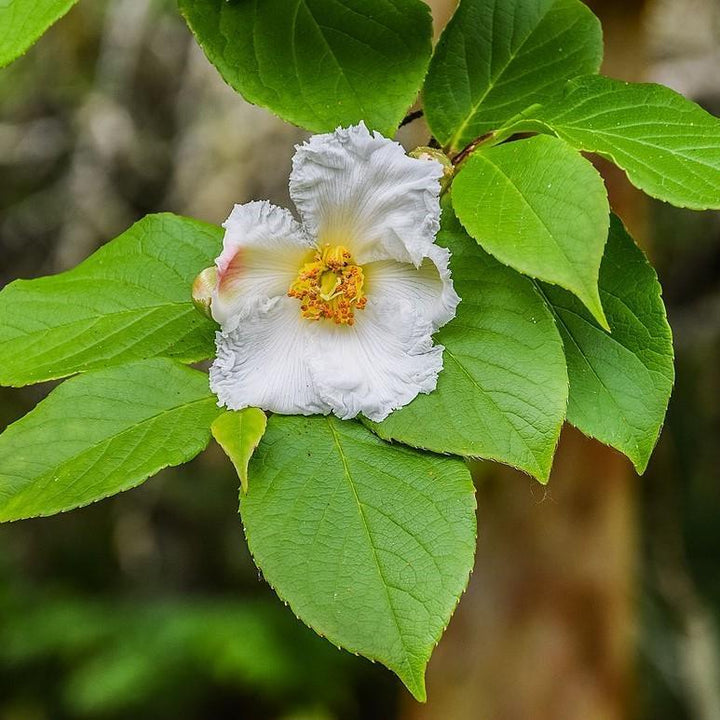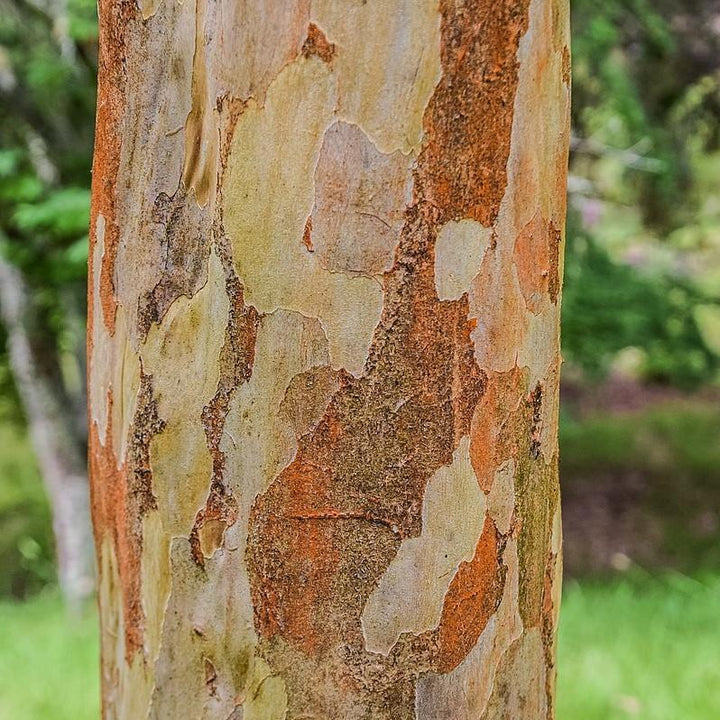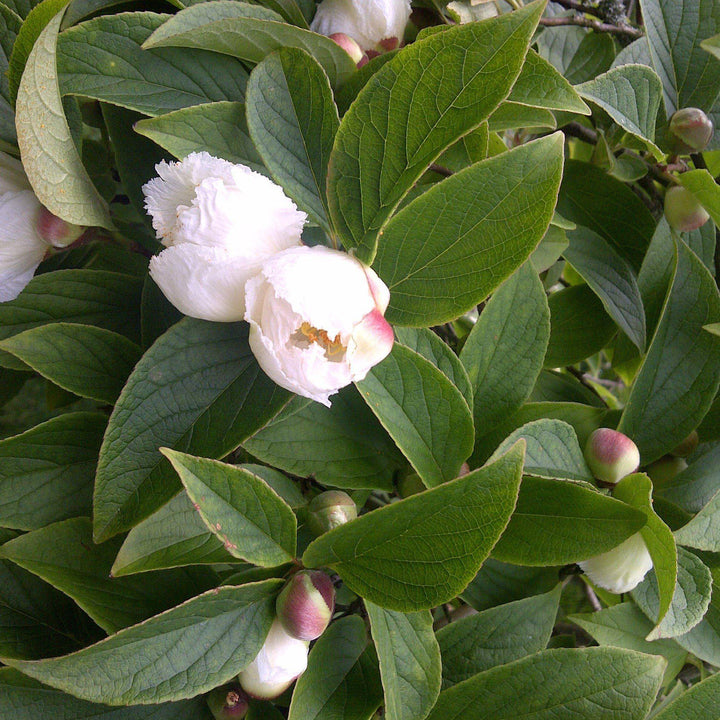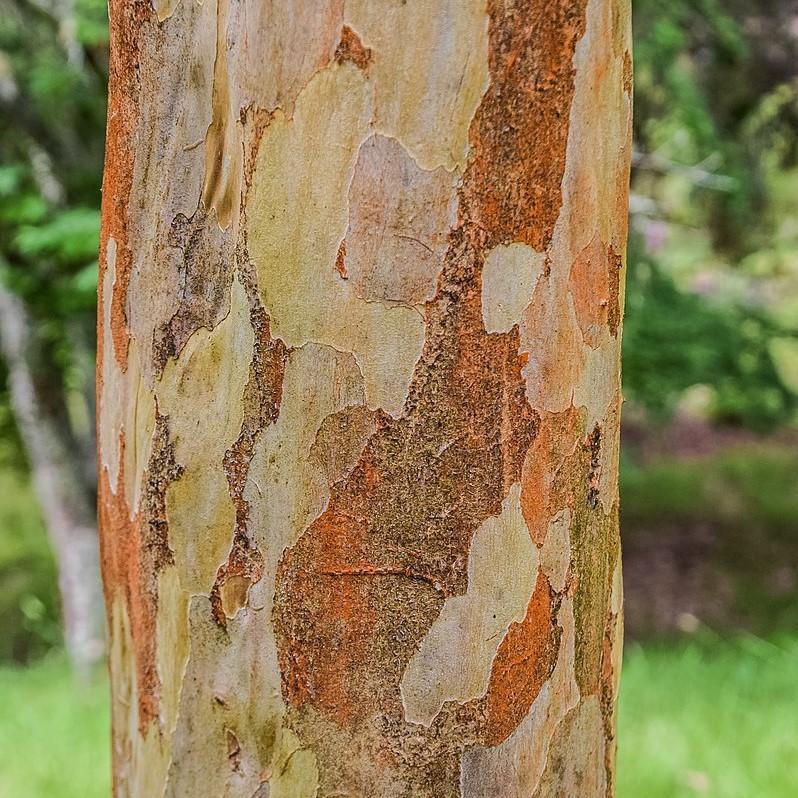-
Japanese Stewartia is a small to medium-sized tree that typically reaches heights of 20 to 40 feet (6 to 12 meters). It has a rounded crown and smooth, grayish-brown bark that exfoliates in patches, revealing a mosaic of colors. The leaves are dark green, glossy, and oval-shaped with serrated edges. In the fall, they turn vibrant shades of red, orange, and yellow.
-
Flowers: One of the highlights of the Japanese Stewartia is its stunning flowers. In early summer, it produces large, showy, white or creamy-white flowers with yellow stamens. The flowers resemble camellias, hence the species name "pseudocamellia." They have a delicate and intricate appearance, adding elegance to the tree.
-
Habitat: Japanese Stewartia thrives in well-drained, acidic soils and prefers partial shade to full sun. It is commonly found in woodland areas, along stream banks, and in gardens as an ornamental tree.
|
Type: |
|
|
Height: |
20’ - 40’ |
|
Spread: |
15’ - 30’ |
|
Spacing: |
20’ |
|
USDA Hardiness Zone: |
5 - 8 |
|
Culture: |
|
|
Bloom Color: |
White |
|
Season of Interest: |
MAINTENANCE NEEDS: Low Maintenance. Intolerant of drought. Avoid planting in afternoon sun in the South. Transplant while young. No serious pests or diseases.
LANDSCAPE USES: Accents or Group Plantings, Borders, Woodland Gardens, Naturalized Areas, Wildlife Gardens, Privacy Screen, and Shade Tree.
COMPANION PLANTS: Camellia, Astilbe, Hosta
IMAGE: Krzysztof Golik, Stewartia pseudocamellia in Hackfalls Arboretum (4), CC BY-SA 4.0
Emőke Dénes, Ericales - Stewartia pseudocamellia - 4, CC BY-SA 4.0
Krzysztof Golik, Stewartia pseudocamellia in Hackfalls Arboretum (1), CC BY-SA 4.0


